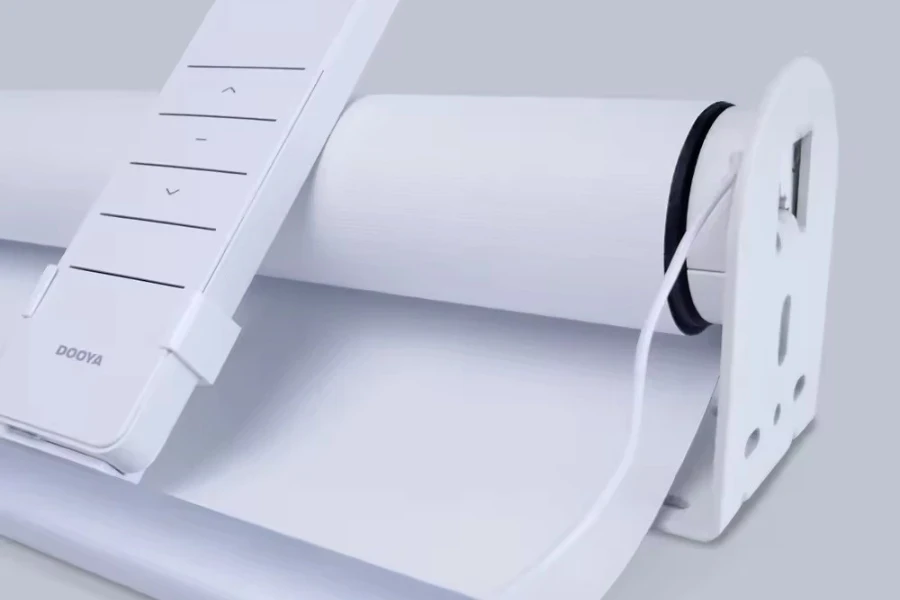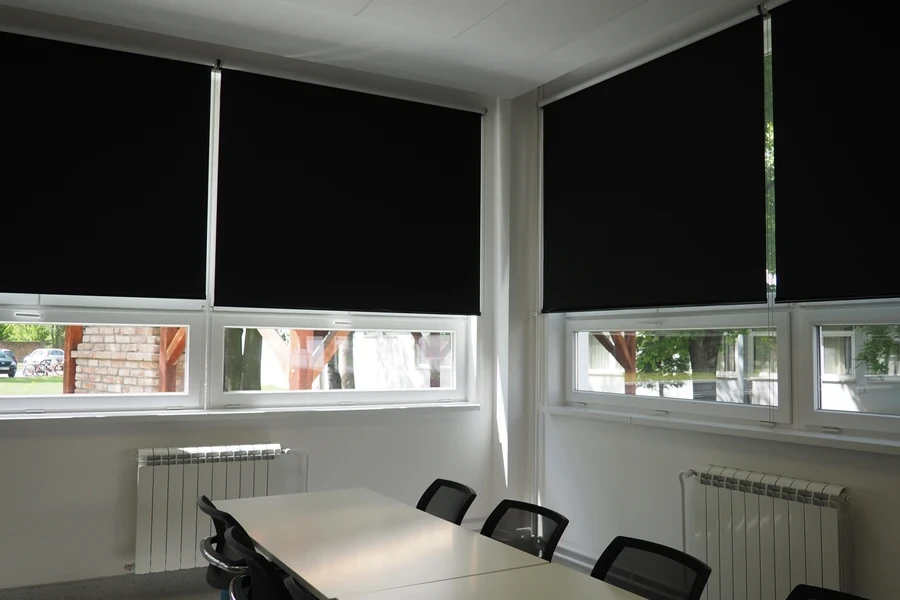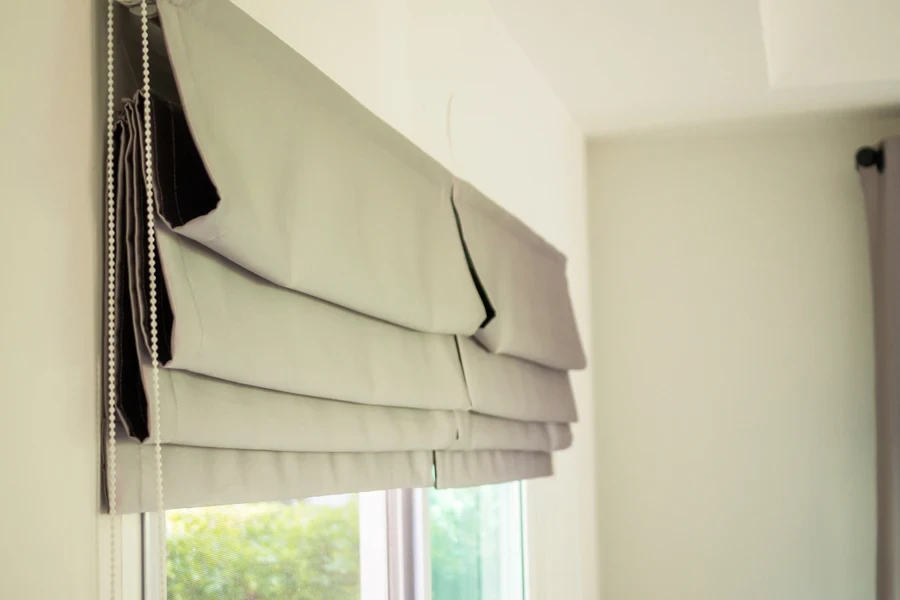Roller blinds are a versatile window treatment option that can elevate the look and functionality of your home or business. But with so many styles, materials, and features, the selection process can feel overwhelming.
This guide breaks down key factors when choosing the perfect roller blinds for your space. From measuring tips to exploring different types of roller blinds, you can make an informed decision on your purchase. So read on for our guide to selecting the best roller blinds on the market in 2024.
Table of Contents
Why choose roller blinds?
Types of roller blinds
How to choose the right roller blinds for your home/office
How to measure for roller blinds
Roller blinds vs. other window treatments
Conclusion
Why choose roller blinds?
Roller blinds are a popular and preferable window treatment solution in 2024 owing to their aesthetic and compact designs. They can be easily raised, lowered, or left partially open, allowing precise control over privacy and the amount of natural light entering a room.
Installing roller shades insulates windows, preventing heat loss in winter and minimizing heat gain from the sun in summer. Blinds reduce heat loss by up to 33% indoors, which in turn lowers energy bills.
Types of roller blinds
Standard roller blinds

Basic roller blinds consist of a fabric panel that rolls up and down on a spring-loaded mechanism. Installing these types of blinds is relatively inexpensive and creates a simple, clean aesthetic.
Sunscreen blinds
Sunscreen roller blinds help regulate the amount of sun rays that enter a room. Their see-through mesh fabric allows light into the room while protecting occupants from the sun’s glare. Most sunscreen blinds are made from polyester and PVC, offering excellent durability, weather resistance, low shrinkage, and heat insulation.
Motorized roller blinds

These blinds are operated by a small electric motor, allowing for convenient remote-controlled operation. Motorized roller blinds are especially useful for hard-to-reach windows and homes with kids or pets for safety.
Dual roller blinds
Also known as day/night or zebra blinds, these blinds have two alternating fabric panels. One panel is sheer for filtering light, while the other is blackout for complete darkness.
Blockout blinds

Blackout or blockout roller blinds are made of material that blocks out all the light that enters through a window. They are great for privacy in bedrooms, bathrooms, and media rooms.
Smart roller blinds
Smart roller blinds are typically motorized, allowing users to open, close, and adjust the blinds using a remote control, smartphone app, or voice commands. They can be integrated with the office or home’s automation system, enabling them to open and close at specific times of the day/night.
How to choose the right roller blinds for your home/office
There are several things to consider when selecting roller blinds:
Color and pattern
Choose roller blinds that complement the room’s interior design, considering the color, pattern, and style. Match the blinds to the wall colors if you desire a cohesive, monochrome look. On the other hand, choosing a color that completely stands out would create high contrast.
Window size
Measuring the width and length of your window openings ensures a perfect fit. Determine whether you want an inside mount (recessed into the window frame) or an outside mount (installed on the wall above the window) for the roller blinds. Also, consider any obstructions or architectural features that may affect the mounting process.
Light control
The room’s function is important when choosing roller blinds. For instance, if you’re choosing roller blinds for your bedroom, opt for darker blackout shades for maximum light control and privacy.
For living areas and commercial spaces where some light is desirable, sheer or translucent roller blinds are a great pick.
Fabric type
Roller shades have various fabric options, including mesh, natural fibers like bamboo and linen, and synthetic polyester, PVC, and vinyl. Synthetic materials are popular since they’re durable, easy to clean, and relatively inexpensive. However, they don’t offer the natural aesthetic of bamboo or linen roller blinds.
Budget and installation
Roller blind prices vary from affordable options to high-end, customized types. For large windows or complex installations, you’ll incur more for professional installation. While DIY installation is cheaper, it’s only practical for simpler, off-the-shelf options.
How to measure for roller blinds

Since modern roller blinds are made to measure, buyers must provide the window’s exact width and height (drop) measurements. For accurate results, you’ll need a tape measure, pencil or marker, notepad, and a stepladder (for high windows).
Measuring for inside mount
1. Place the tape measure horizontally inside the window frame, taking measurements for the top, middle, and bottom parts. Use the narrowest point as the width.
2. Consider measuring the width and drop in three places (left, right, and center). Taming multiple measurements ensures the proper blind sizing for the narrowest dimensions since windows can sometimes be slightly out of square.
3. For the drop, measure from the top of the window frame to the desired sill. Take measurements for the left, center, and right recesses—use the smallest measurement as the drop.
Measuring for outside mount
1. Place the tape measure across the window recess to measure the width of the window opening. Then, add at least 3 inches (7cm) to each side to allow for overlap.
2. Ensure the mounting surface depth has ample flat surface area for securing mounting brackets on each side. Most manufacturers often recommend at least 1 inch of flat surface.
3. For the drop, measure from where you want the blind to start (above the window frame) to the desired sill or floor level.
Roller blinds vs. other window treatments
Roller blinds vs. Venetian blinds

Venetian blinds are operated by tilting the horizontal slats, offering great light flexibility. For roller blinds, opening the blinds to allow light compromises privacy and does not protect from glare.
However, the horizontal slat design of Venetian blinds may not offer the blackout capabilities of roller blinds.
Roller blinds vs. Roman blinds

While both types are roll-down window coverings, Roman blinds have extra fabric layers that fold up nicely when raised. Unlike minimalistic roller blinds, the pleated fabric gives a formal, elegant finish.
The major downside to Roman blinds is their need for regular maintenance. The pleated fabric layers often trap dust and debris, warranting more care. They’re also more expensive than roller blinds.
Roller blinds vs. curtains
Curtains offer more design flexibility, with more fabrics, colors, and patterns than roller blinds. The downside is that they can be more high-maintenance—keeping those fabrics looking fresh takes a bit more work.
Roller shades are a practical, low-maintenance choice, especially in commercial spaces. Curtains can feel more residential and may not suit the interior design styles of modern offices or storefront setups.
Conclusion
Choosing the right roller blinds involves understanding your specific needs and preferences. The key is to weigh factors like light control, energy efficiency, and ease of operation against your aesthetic goals and budgetary constraints.




